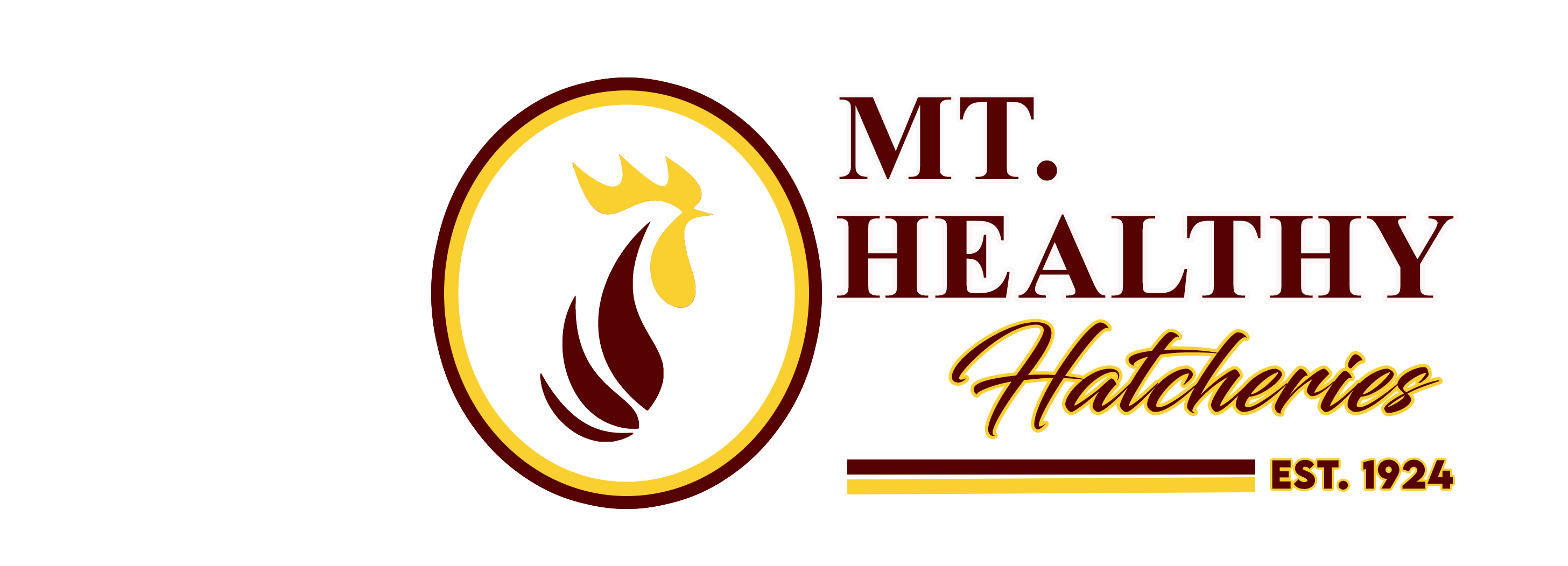Getting Heated: Why Heat Lamps Outshine Brooder Plates for Mail-Order Poultry
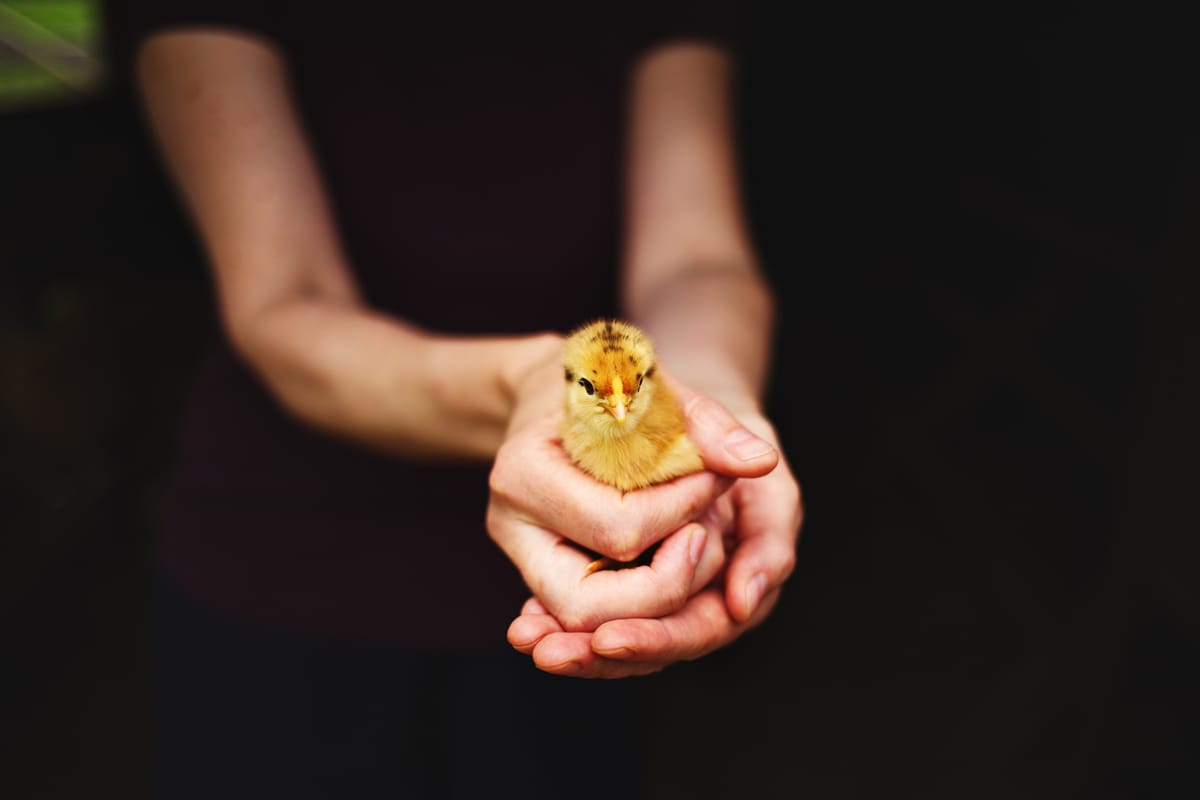
Today, we're focusing on a critical element every poultry keeper faces: Heat. Specifically, where it originates from. Choosing the right heat method is a critical choice in the health, vigor, and the overall welfare of your birds. The wrong choice, or rather a poorly informed choice, could be fatal. It’s no secret that we are huge heat lamp supporters here at Mt Healthy Hatcheries, but we certainly understand the draw a brooder plate has – especially on a new or small flock owner. I hope that by after reading this article you’ll feel equipped to make the best decision on heat for your new flock, even if that isn’t our preferred method.
Heat Plates vs Brooder Plates
A brooder plate is a radiant plate raised on legs that emits heat so chicks, ducks, poults, etc. can be underneath and feel its warmth. The main idea behind this plate is that mimics a mother hen, when chicks are raised by a hen they spend majority of their time underneath her. Brooder plates typically do not exceed 125°F, and the temperature is largely controlled by the height of the plate in relevance to the birds.
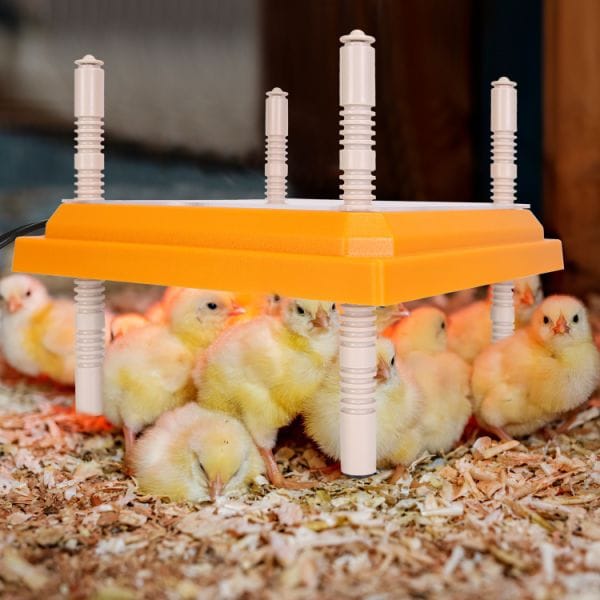
A heat lamp is actually 2 elements, the lamp fixture, and the heat bulb. The most common lamp fixture is made of metal with a steel guard. Heat bulbs are a high heat emitting lightbulb, often 125W or 250W. The bulb emits heat over a broad area, and the temperature is controlled by the position of the bulb in relevance to the area.
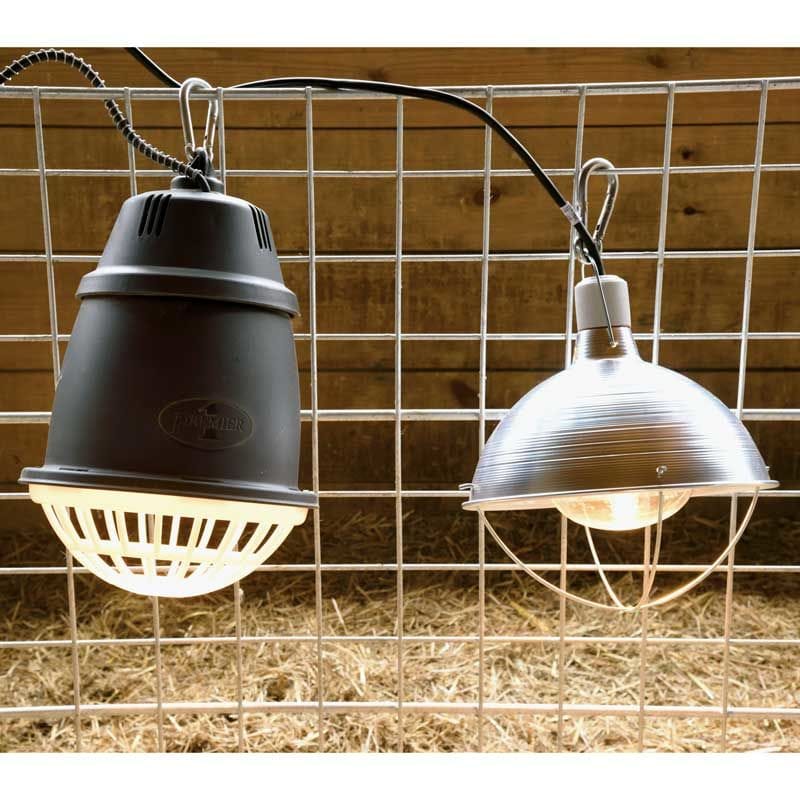
In the case of a brooding plate, the chicks are actually touching or nearly touching the heat source, while in a lamp-heated brooder the lamp is likely a considerable distance away (1-2 feet typically). A brooder plate is more expensive to buy, but cheaper to run. The heat lamp is normally a fraction of the cost of a plate but uses more electricity to run. Heat lamp components are extremely accessible, available at nearly every farm store, hardware store, big box store etc. Heat lamps are almost only sold at farm stores or online retailers. As related to fire hazard, brooder plates pose a lesser risk than heat lamps undoubtably as the highest surface temperature is much lower.
Now, you’re probably thinking, hmm.. the intro says they’re ‘pro-heat lamps’ but based of what I’ve learned, the brooder plate seems like a no brainer? Trust me, I get it, heck, I’m halfway thinking it too writing this. So let get to the reasons we don’t recommend brooder plates.
"the natural inclination to be warm is stronger than to be fed"
Limitations of Brooder Plates
The big pro with the brooder plate is also simultaneously it’s biggest con. It's the fact it emits mild heat over a small area. The reason this is a con, especially with mail ordered birds, is that the natural inclination to be warm is stronger than to be fed. Mail order poultry is typically in the mail for 1-2 days which is not inherently an issue due to their ability to sustain themselves with their yolk sac. However if they are put into an environment where they are forced to choose between warmth and food/water, they will choose warmth and therefore not eat or drink enough to sustain themselves, let alone bounce back from any potential shipping stress. All the safety related perks mean nothing if the chicks end up dying from starvation or dehydration.
Lack of accessibility is also a concern. If your brooder plate malfunctions or breaks, often you cannot just run to the store to replace it whereas you can with a heat lamp. The temperature is also inflexible. With having a (comparatively speaking) low temperature and low height range, there isn’t much flexibility to control the temperature. As chicks develop, they need less and less heat which you cannot adjust well with a plate. Also, day old poultry grows very quickly, so there is a possibility of them physically outgrowing the plate whilst still requiring some heat. The plate is also very specific to quantity. If you have a plate that fits 10 one-day old chicks under it, if you try to use it for 20, it’ll be too small and therefore not all the chicks will be getting heat. Same logic applies as chicks get older and take up more space under the plate.
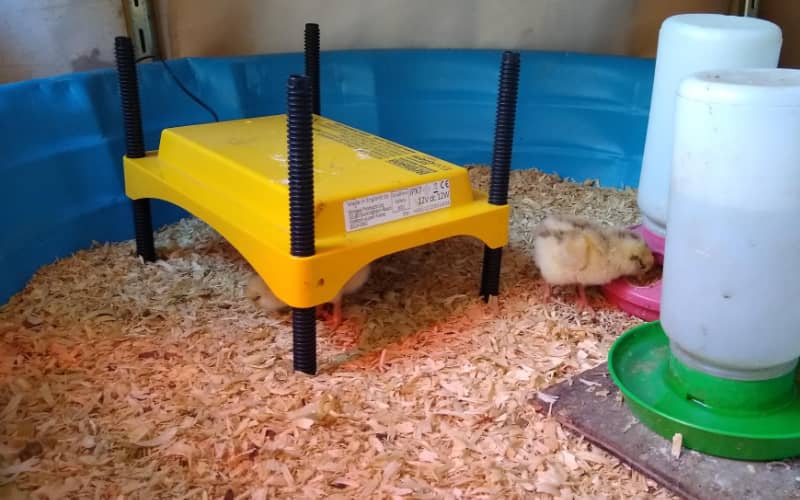
Advantages of Heat Lamps
Heat lamps emit a large amount of heat over a wide area, which is how we find raising chicks is best done. We like to see <5°F or less temperature fluctuation in the brooder, assuming the brooder is at the appropriate temperature. We want to force the chicks to be warm, so they can eat, drink, and recover from shipping.
A heat lamp is also more flexible. You can greatly control the temperature by the position of the lamp and the wattage of the bulb. You can also use the lamp to multiple flock sizes and therefore it can grow with you and your flock.
The heat lamp is a more versatile choice for a lower purchase price, with better availability and results. The cons are that they use more electricity, and they are a higher fire-risk their alternative options.
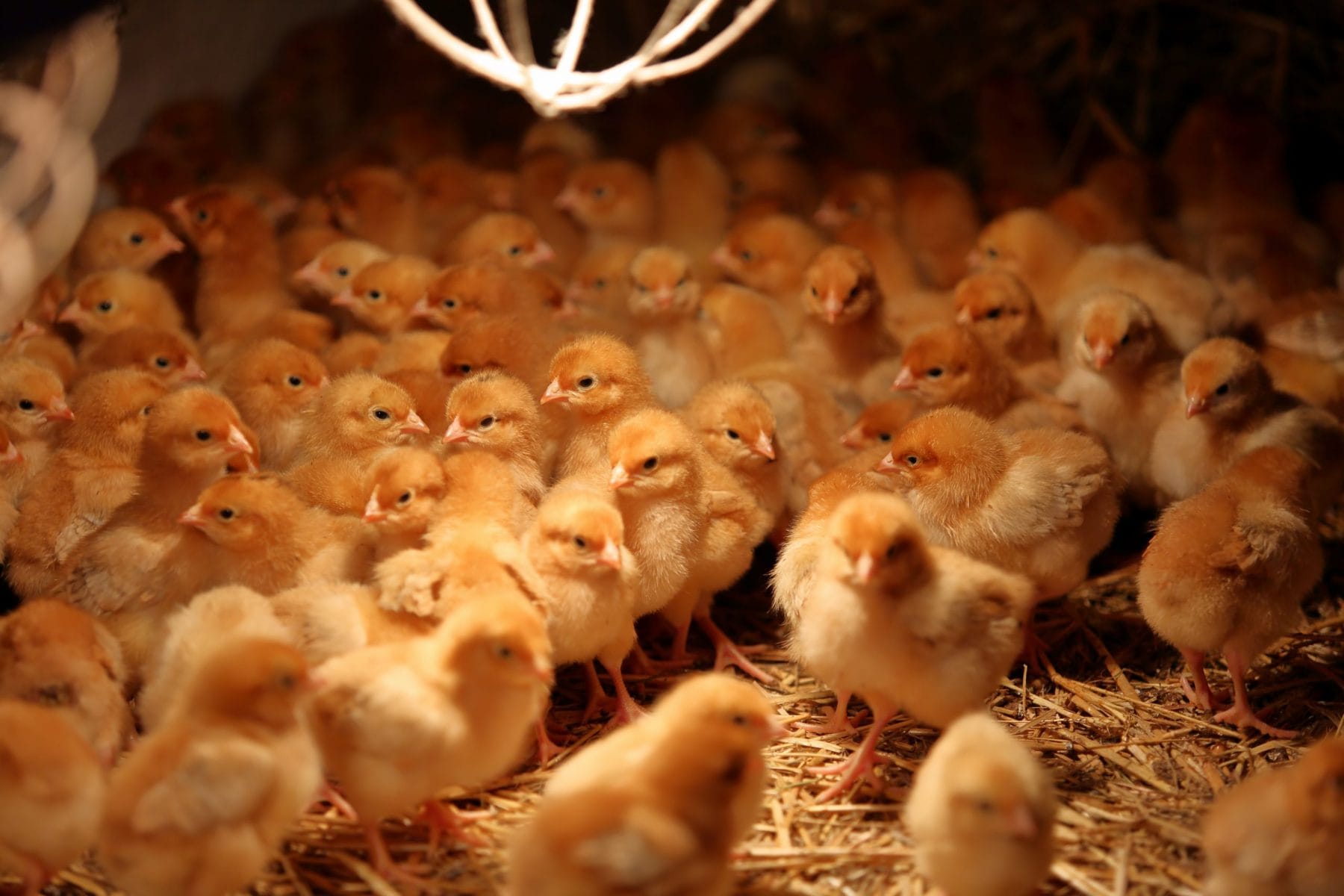
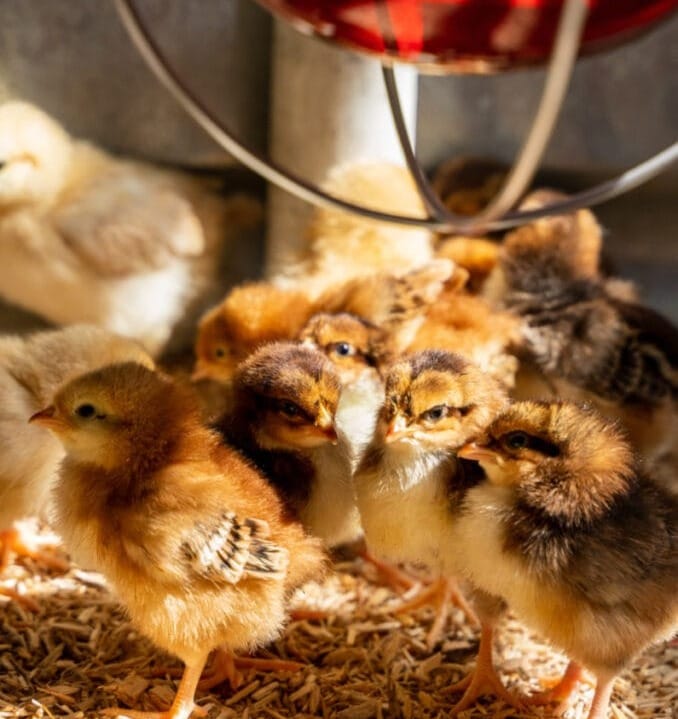
How to Safely Use a Lamp or a Plate
How to Safely Use Heat Lamps
Of course, it’s important to acknowledge that heat lamps carry inherent fire risk. But it's also important to consider the widespread use of heat lamps in numerous applications, both within and beyond agriculture. Despite the tragic nature of fire incidents, they are relatively few, especially when appropriate safety measures are in place.
Be sure all the lamp elements are tightly assembled. Use a heavy-duty cord to power your lamp(s) if an extension cord is required. Use a non-flammable hanger such as chain. Always have a secondary hanger or support in case the primary fails. Always use a guard on your lamp, which is essentially a rounded cage that prevents the bulb itself from touching anything should it fall. You may also consider using more lamps at a lower wattage. Check on the lamp and chicks regularly, and of course if anything smells like burning disconnect and replace.
How to Safely Use Brooder Plates
As we learned, brooder plates carry a different set of risks than heat lamps. The risk with brooder plates is too little warmth. Brooder plates could work well for you if your chicks are hatched locally, and were given immediate access to food and water or if they're a little older, and if the ambient air temperature is at the absolute bare minimum 80°F, and chicks have experienced no other stressors. Brooder plates would also work well in conjunction with a low wattage heat lamp. It’s not that brooder plates are a faulty product, or their abilities are misleading, it’s that a huge majority of backyard chickens are mail-ordered in some capacity, and for that, it really just does not work well.
In conclusion,
While both heat lamps and brooder plates have their places in poultry care, understanding the specific needs of your flock—particularly mail-order chicks—can guide you to make the best choice. For those facing the unique challenges of chicks shipped with inevitable stress, the adaptable and extensive warmth of heat lamps is not just a preference; it's a necessity.
We're here not just to sell, but to serve as a resource as you navigate the joys and challenges of raising healthy, happy poultry. Whether you decide on heat lamps, brooder plates, or a combination of both, we're here to support your journey with advice, supplies, and the shared experience of our community.

